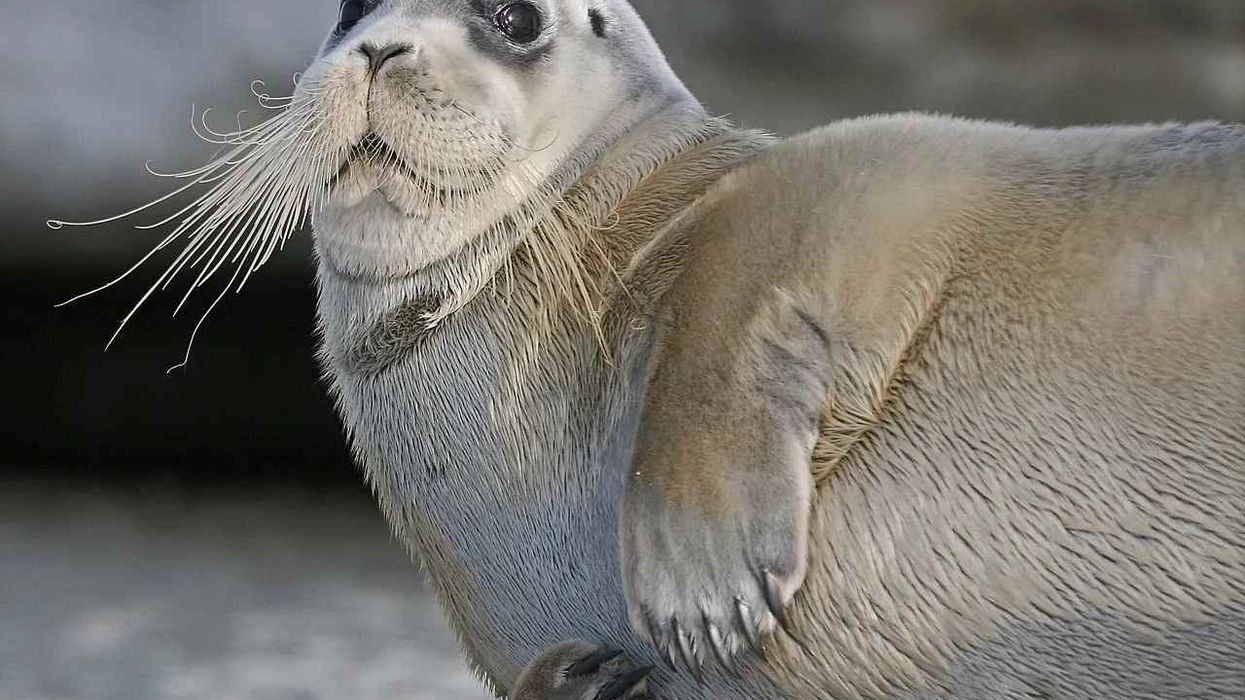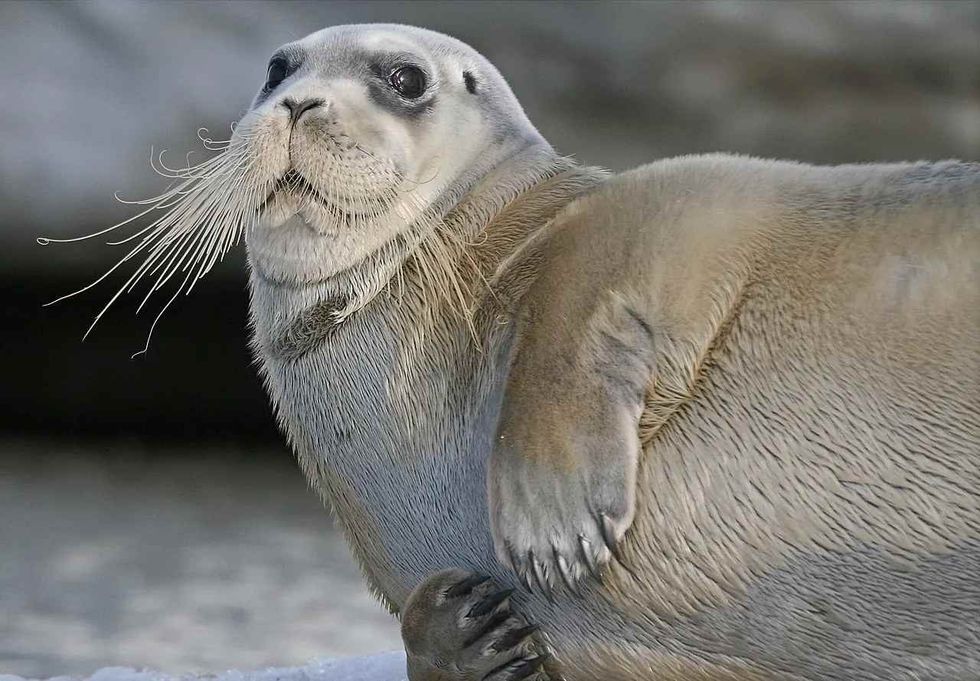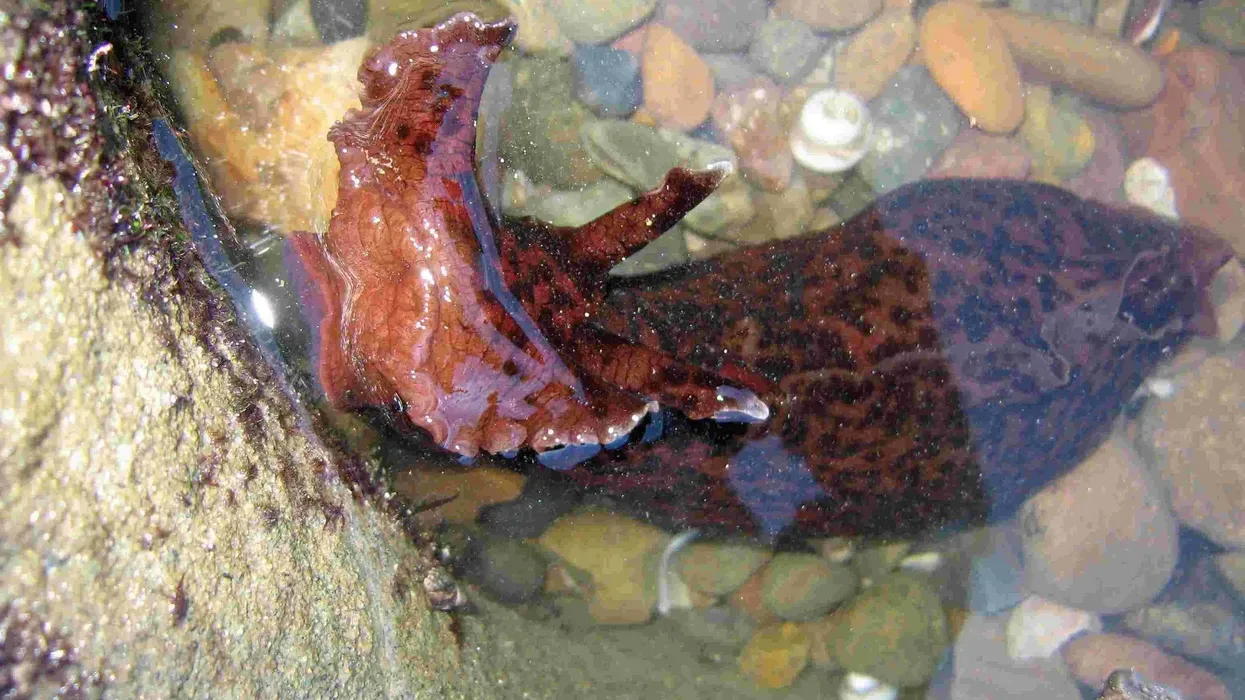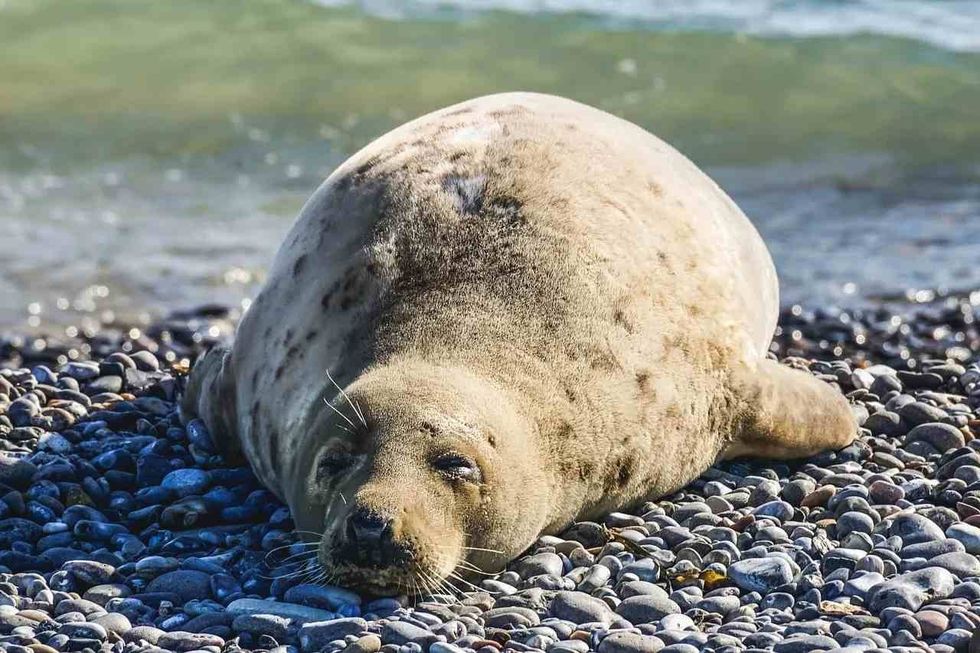The bearded seal (Erignathus barbatus) is one of the four Arctic seal species. These bearded seals are the largest in the world.
Their distribution stretches across the Arctic and North Atlantic Ocean, via the Bering and Chukchi Seas. Also known as ice seals or square flipper seals, these marine mammals live mainly on sea ice under frigid climatic conditions.
These bearded seals derived their name from their unique feature of extensively long whiskers and square-shaped flippers. Apart from polar bears, walruses, and killer whales, humans pose a serious threat to these seals, both directly and indirectly.
Global warming is bringing serious survival problems to the living site of bearded seals. But the recent conservation efforts of the Alaska Department of Fish and NOAA Fisheries are helping in the protection of the breeding conditions and life span of bearded seals.
Interested to know more about the bearded seals? Read the article for more fun facts. Check out other seal species like the Weddell Seal and fur seals.
Bearded Seal Interesting Facts
What type of animal is a bearded seal?
Bearded seals are semi-aquatic marine animals. Having long whiskers, they are the largest among the four Arctic seal species that dwell on the polar pack ice and water.
What class of animal does a bearded seal belong to?
Bearded seals belong to the class Mammalia.
How many bearded seals are there in the world?
As of now, the Arctic bearded seals are not a threatened species. Calculating their population across different countries and ocean waters, there are approximately 500,000 bearded seals on Earth.
Where does a bearded seal live?
The bearded seals live in polar waters and cold and saline marine waters. Since they are semi-aquatic, they also live on chunks of ice floating on water. These bearded seals can't survive in hotter temperatures, so in summers they migrate northwards on ice floes and dwell on land where they play and throw sand on themselves.
What is a bearded seal's habitat?
The habitat range of bearded seals (Erignathus barbatus) lies in the polar marine waters of the Arctic and North Atlantic Oceans. Their continuous habitat distribution extends from the Bering, Chukchi, and Beaufort Seas, the Sea of Okhotsk, the northern coasts of Russia, Norway, Canada, and Alaska, and around Iceland and Greenland.
They remain afloat on the broken sea ice chunks and dive underwater whenever threatened by predators. These seals prefer living in the open water of 200m depth.
Who do bearded seals live with?
Bearded seals prefer being by themselves and dislike group mingling. To avoid interaction on the site of their stay, most seals float on separate ice floes or keep their head submerged in sea ice making breathing holes on thin ice. However, during the mating season, the males become very friendly and energetic while looking for a partner.
How long does a bearded seal live?
Bearded seals tend to live up to 30 years. In recent times, due to the fast melting of pack ice, the life span of these seals is gradually diminishing.
How do they reproduce?
It takes almost a year for the seal pupping to begin. At first, the adult males give out mating calls in search of females.
With sharp vocalizations in the form of loud rhythmic songs, moans, and groans, the males look for their mates. After mating, it takes almost 11 months for the females to give birth to the young seal pups.
This delayed implantation leads to a prolonged gestation period of 11 months. The pupping of the seal pups occurs after winter in early spring, between April and May.
The pups are born in the ice floes and their weight ranges between 66-88 lb (30-40 kg). Within a few hours, they dive into the sea waters and become proficient divers thanks to their fore flippers.
Since these seal species are polyandrous, the males after mating leave their partner and set out in search of other females. While the mother seals cares for and nourishes the pups for 18-24 days, after which they become independent.
The females give birth to one pup per breeding season, while the males mate with multiple females in a single breeding season. The females sexually mature between three and eight years while the males mature at six or seven years.
What is their conservation status?
At present, the bearded seals are listed as a species of Least Concern in the IUCN Red List. However, several factors may lead to rapid population decline shortly.
The most important concern is that of Climate Change and associated warming, leading to the rapid melting of the polar ice caps. This is reducing the number of sea ice floes and is posing a threat to their habitat range. Frequent oil spills in the seas also threaten their survival.
Humans pose the biggest threat to these seals. Poaching of these creatures for their fur and meat has seen their population decline.
In recent times, several ocean laws have protected the bearded seals from poaching. The Alaska Department of Fish and NOAA Fisheries are organizations pooling in conservation efforts for bearded seals.
Bearded Seal Fun Facts
What do bearded seals look like?
These seals look like normal seals. Since bearded seals live in frozen areas, they have a thick coating of fur covering their body. They have very long and white-colored whiskers from which they get their name.
Their body structure is elongated with a small head, broad chest, and small square flippers which help them to swim in the water. These bearded seals have grey, greyish-black, or black-colored bodies. Like other seal species, these bearded seals have breathing holes on the sides of their glistening eyes.
How cute are they?
Bearded seals are extremely adorable and their faces look like dogs, but they are unrelated animal species. When they laze on the sea ice with their elongated body, hanging whiskers, and rear flippers, they look the cutest. On a scale of 1 to 10, these bearded seal species can be given a 10 for their cuteness.
How do they communicate?
Usually, they avoid interaction, but the males communicate extensively by singing songs for finding mates. They give out distinct trills, moans, and sweeps of noises mostly under the sea ice waters for finding mates.
How big is a bearded seal?
These seals are the largest of all seals on Earth. With small heads, elongated bodies having an upwardly arched back, and small flippers, their size range between 6 ft 11 in-8 ft 10 in (2.1-2.7 m). Bearded seals are twice the size of normal seals. They are three times smaller than polar bears.
How fast can a bearded seal swim?
While the exact swimming speed of the bearded seals is not known. But they can swim pretty fast as evidenced by their great diving skills from their site on the ice floats. Even bearded seal pups can swim swiftly into greater depths just minutes after being born.
How much does a bearded seal weigh?
The weight of the ice seals is between 441-948 lb (200-430 kg). The bulk of their weight comes from their heads and body. Even being so heavy they can easily dive into the ocean bottom or reach the seafloor with the help of their flippers.
What are the male and female names of the species?
Both the male and female bearded seals do not have any separate names assigned to them.
What would you call a baby bearded seal?
Baby bearded seals are called pups.
What do they eat?
The diet of the seals consists of clams, squids, fish, Arctic cod, sculpins, flatfish, and octopuses.
Are they dangerous?
These sea ice seals are not dangerous to humans. Since they are shy animals, they dive into the water when they see humans.
Would they make a good pet?
Bearded seals are not suitable for keeping as pets. Their population distribution is in areas having permanent ice covers, so they won't survive in warmer temperatures or around humans.
Did you know...
The songs sung by male bearded seals can be heard from 12 miles away.
Bearded seals tend to sleep on water in a standing position keeping their heads above water.
Since they hate to interact, they keep their heads underwater while lazing around.
The young bearded seal pups have a darker skin color than the adults to keep them extra warm in the frigid temperatures
Bearded seals do not live in groups, but if they do, then they are called a herd, pod, or colony.
What is a mature harp seal called?
It is called a saddleback seal or Greenland seal.
What is the rarest seal?
Saimaa ringed seals and Mediterranean monk seals are the rarest species of seal.
Here at Kidadl, we have carefully created lots of interesting family-friendly animal facts for everyone to discover! Learn more about some other mammals including Bolognese dog facts and seal facts.
You can even occupy yourself at home by coloring in one of our free printable bearded seal coloring pages.









